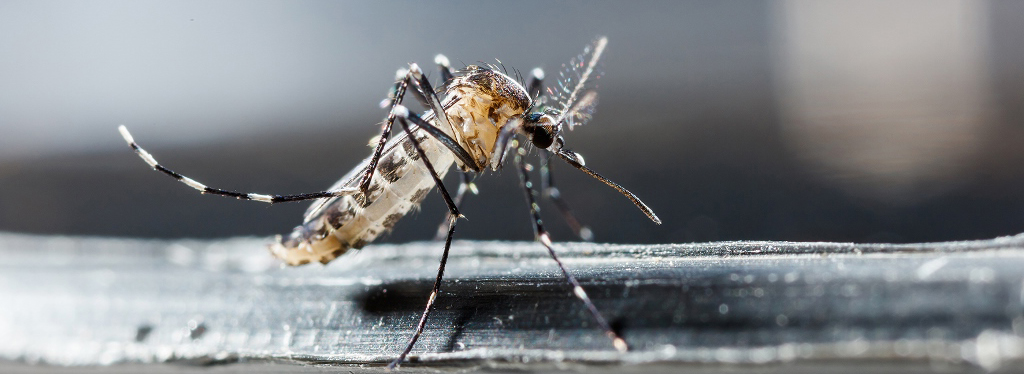THE WEST NILE VIRUS: A VOYAGE FROM ITS ORIGINS TO GLOBAL PRESENCE

From Africa to Europe and back. A study that reveals a two-way path, shaped by the complex interaction between migratory birds and mosquitoes
The West Nile Virus (WNV) has long captured the attention of the scientific community. Discovered in 1937 in Uganda, in the West Nile district from which it gets its name, it is one of the most widespread viruses globally, posing an increasing concern for Health Authorities due to its ability to cause disease in humans. A study conducted by the Istituto Zooprofilattico Sperimentale of Teramo, in collaboration with the University of Trento, the Edmund Mach Foundation in San Michele all’Adige, and the Pasteur Institute in Dakar, Senegal, has now explored the WNV spreading patterns, revealing complex, and partly unexpected, pathways connecting Africa and Europe. The study was published in the journal Nature Communications.
Although most infected people do not show symptoms, 20% can develop a symptomatic form, the West Nile fever, and 1% can have potentially fatal neurological complications, particularly in the elderly or those with a weakened immune system. These data bring the virus under the spotlight of health systems and researchers. Within this scenario, it is very important to thoroughly understand the modes of transmission of the infection in order to plan preventive interventions.
At the heart of the virus's transmission pattern are birds and mosquitoes, particularly those of the Culex pipiens species. Mosquitoes can be infected by viremic birds and, after about a week, can transmit the virus to other birds. But these mosquitoes also feed on the blood of humans, horses, and other mammals, transmitting the virus to them as well. An interesting fact: mammals are generally 'dead ends' for the virus. In other words, even if infected, their blood does not develop sufficiently high levels of the virus, and therefore they cannot transmit the West Nile back to other mosquitoes. This is why birds, including migratory ones, are the real protagonists of this story.
To better understand how WNV spreads, researchers used advanced genetic analysis techniques, which enabled them to reconstruct the evolutionary tree of various virus strains. To these data, geographical reconstructions on the evolution of the infection were added. The combination of the two methods delineated the virus's transmission pathways, providing details on its origins and the pattern of its dissemination over time. The research, in particular, focused on two main lineages: L1 and L2, which have different evolutionary paths and stories, some surprising.
“WNV L2 – says Giulia Mencattelli, Istituto Zooprofilattico of Abruzzo and Molise (IZSAM), first co-author of the paper with Andrea Silverj and Marie Henriette Dior Ndione - has a rather simple evolutionary history: there have been few events of introduction from South Africa to Europe, a one-way path, let's say. Much more interesting, however, is the WNV L1, which seems to have a particularly complex history, with multiple subgroups and different genetic flows between countries and continents. In detail, there is a real 'corridor' between Senegal, Morocco, and the Western Mediterranean European countries, such as Portugal, Spain, France, and Italy. But according to our analyses, it is not a one-way corridor: introductions also occur from Europe to Africa.”
Genetic and geographical data then highlight how the migratory routes of birds and the spread of WNV seem to overlap. This suggests a possible crucial role of migratory birds as carriers of WNV between different geographical areas. “But birds are only one of the factors. – says Giovanni Savini, IZSAM, coordinator of the research group - We must also thoroughly understand the role of mosquitoes and the immune response of various hosts. For example, both lineages, L1 and L2, infect the same bird species, but we know that L1 seems to spread more efficiently than L2. This could be due to other factors that we now aim to explore.”
Integrating viral genetic data with information about migratory bird movements and the susceptibility to infection of various species may lead to a deeper understanding of how the virus spreads. Crucial information for predicting and mitigating the impact of future epidemics, and a study model for other emerging viruses.
SPATIAL AND TEMPORAL DYNAMICS OF WEST NILE VIRUS BETWEEN AFRICA AND EUROPE
Mencattelli, G., Ndione, M. H. D., Silverj, A., Diagne, M. M., Curini, V., Teodori, L., ... & Savini, G. (2023). Spatial and temporal dynamics of West Nile virus between Africa and Europe. Nature Communications, 14(1), 6440. DOI: https://doi.org/10.1038/s41467-023-42185-7

Giovanni Savini
Istituto Zooprofilattico Sperimentale
dell'Abruzzo e del Molise "G. Caporale"
Campo Boario | 64100 TERAMO | ITALIA
Telefono 0039.0861.3321 | Fax 0039.0861.332251
e-mail: archivioeprotocollo@izs.it
Posta elettronica certificata: protocollo@pec.izs.it
Partita IVA: 00060330677
Codice Fiscale: 80006470670


